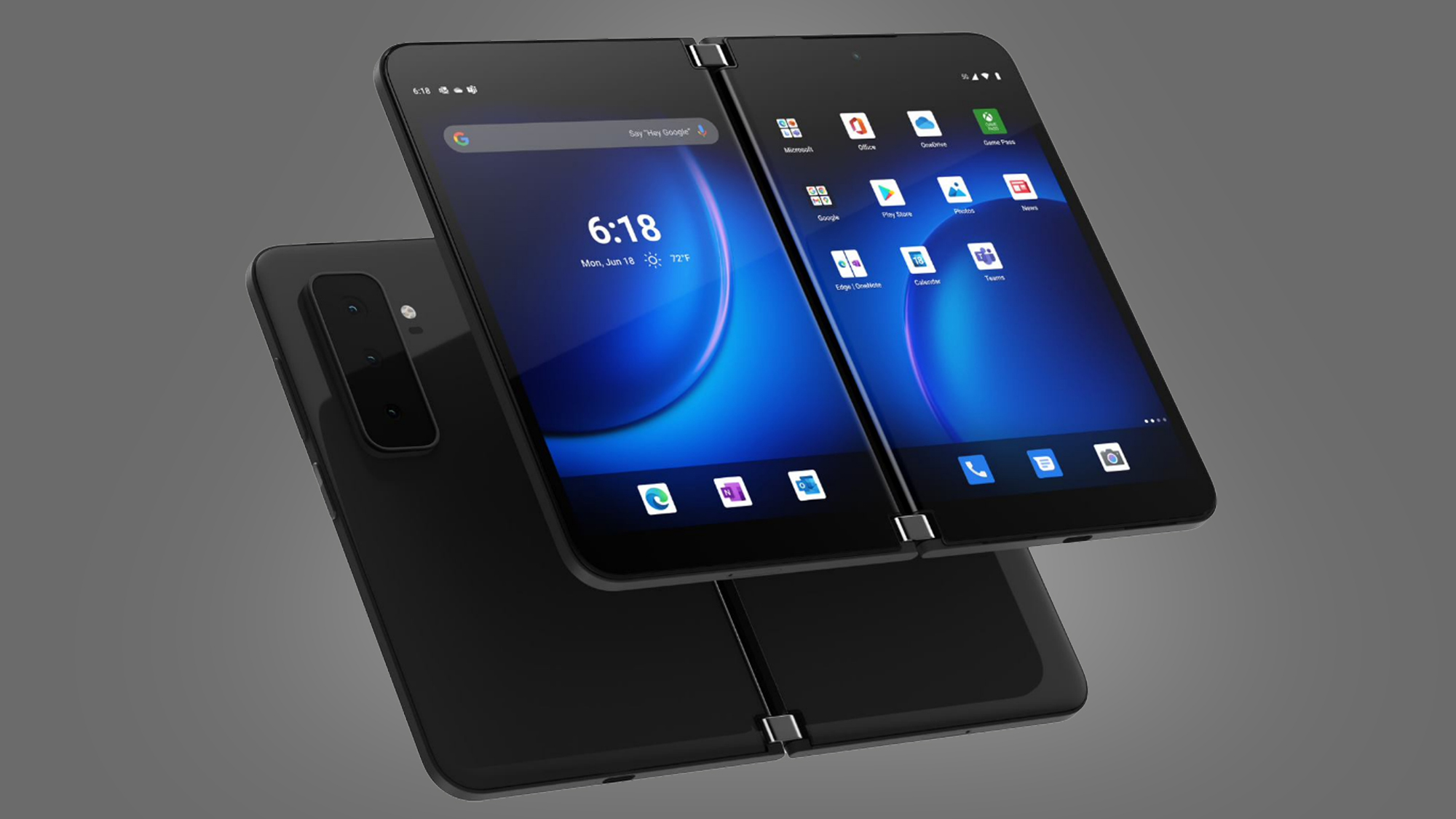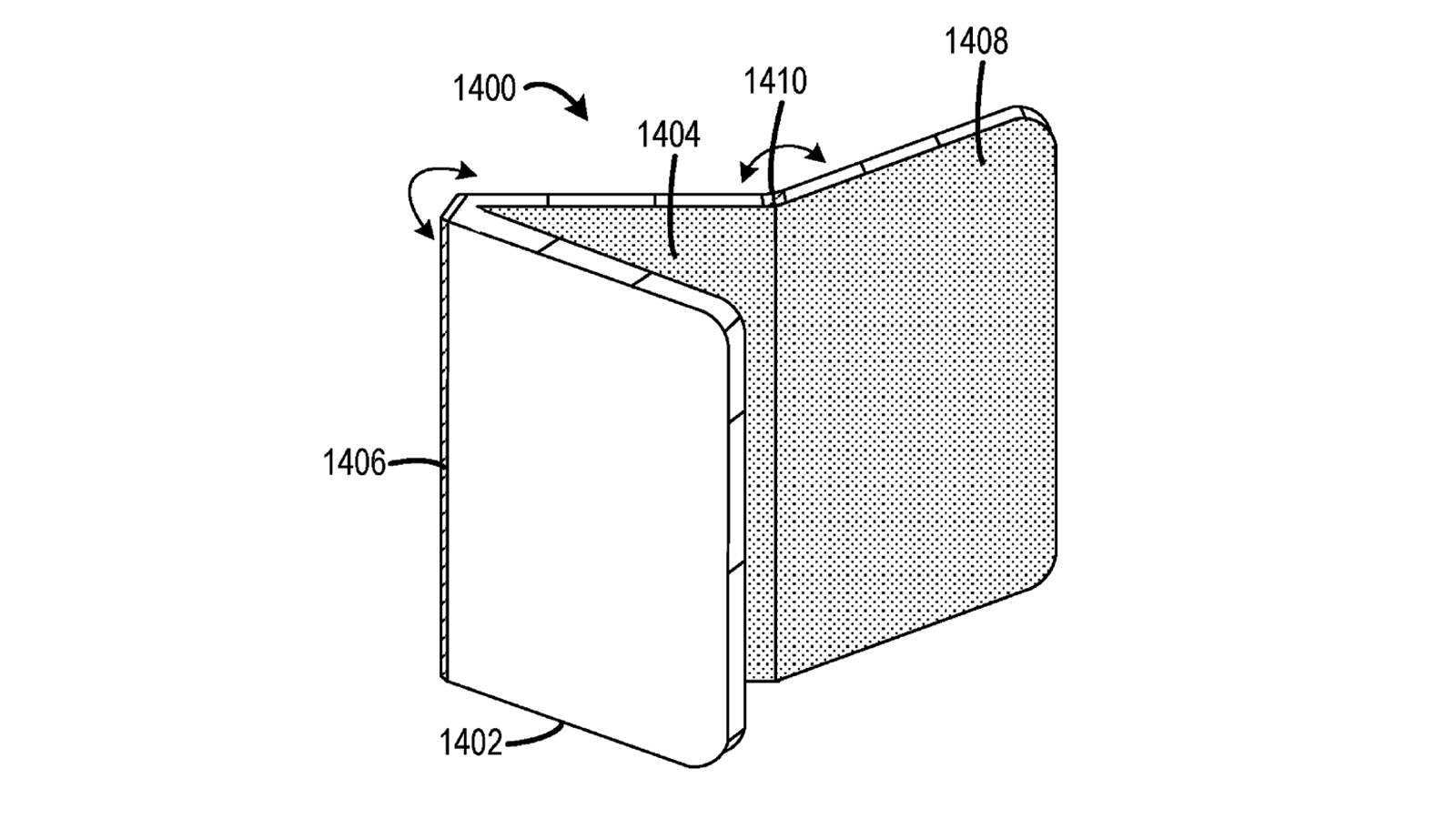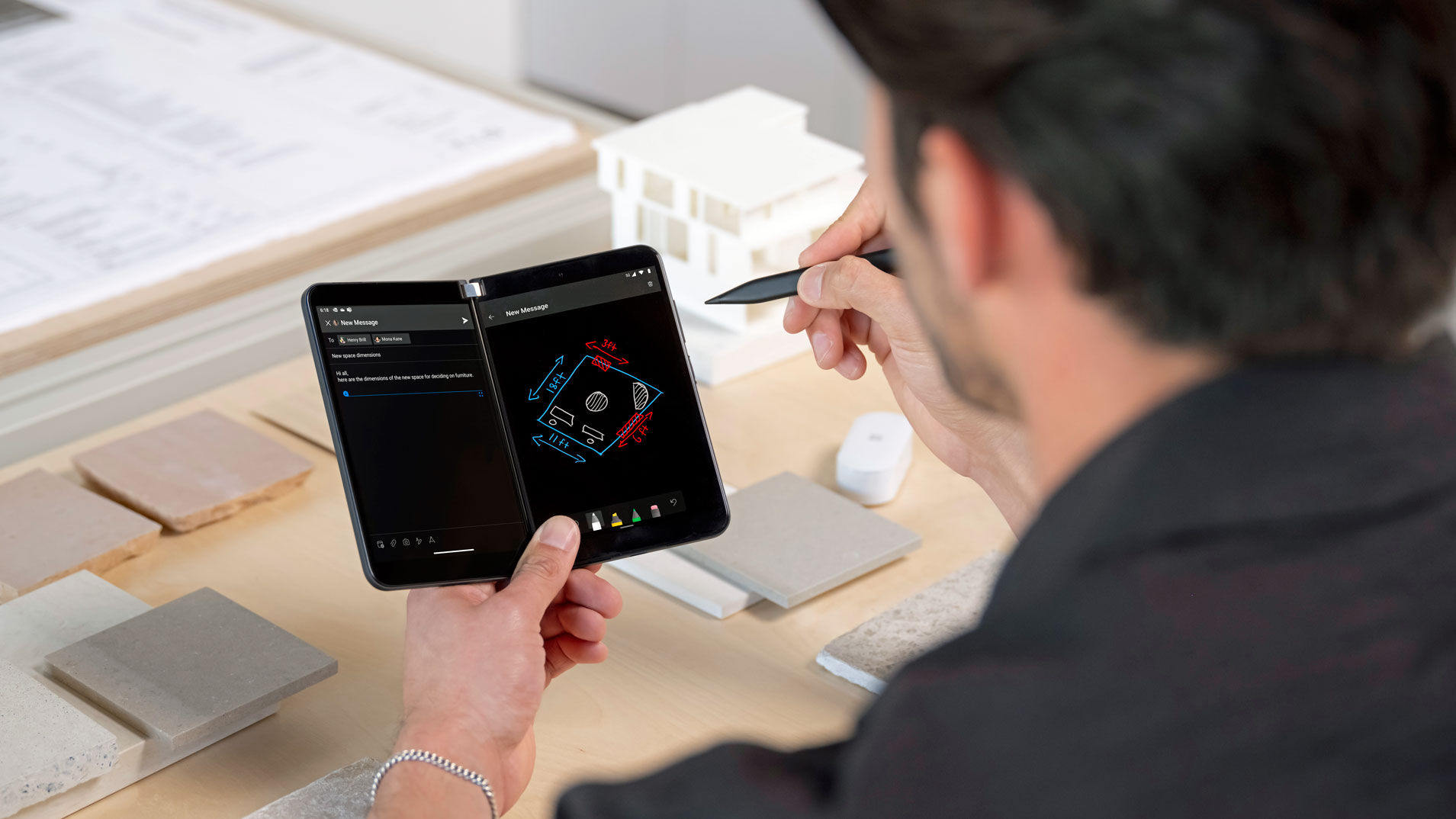Microsoft responds to Samsung with triple-screen Surface concept of its own
The next big trend in foldables?

A newly-awarded Microsoft patent suggests it's looking into a making a new tri-folding Surface device, in a similar vein to a Samsung concept we saw just a few days ago.
Microsoft launched its latest dual-screen phone, the Surface Duo 2, in September, but a patent picked up by Patently Apple suggests that it's looking to go beyond that design and create a device with two hinges, which would connect three separate displays. The patent was awarded on December 23, despite being filed last year.
Like Samsung's similar concept, the three displays would theoretically combine to form a single, giant tablet screen. The real benefit of this design, though, is that the displays could also stack on top of each other, reducing the overall size of a multi-panel device.

This would be made possible by pivoting hinges, which would allow the main screen to remain on the outside of the device, like the Huawei Mate X. It's certainly a recipe for a fairly thick phone, but one that could give you the screen real estate of a large tablet.
On the downside, this concept may be a little way off, if Microsoft's slightly basic patent is anything to go by. Unlike Samsung's patent application, this one has no details about the positioning of circuit boards, sensors or cameras.
As always, patents are also far from a concrete indicator that a product is definitely en route. But Microsoft did eventually jump into the foldables game in 2019, two years after its original patents were unearthed in 2017. And the fact that Samsung is toying with similar ideas suggests this could be a possible future for our folding phones.
Analysis: Foldables need extra polish before new hinges

While a tri-folding phone certainly sounds useful in theory, Microsoft needs to polish its two-screen devices before we get genuinely excited.
Get daily insight, inspiration and deals in your inbox
Sign up for breaking news, reviews, opinion, top tech deals, and more.
In our Microsoft Surface Duo 2 review, we praised its hardware improvements compared to its under-powered predecessor, which pushed it closer towards something we'd genuinely want to carry in our pockets on a daily basis.
But the whole experience is still hampered by several software bugs, including crashes and freezes, plus a fairly limited battery life (around 10-12 hours per charge, in our experience).
These features are all particularly important for devices like the Surface Duo 2, because they're designed for businesspeople and power users who often want to run separate apps on the two screens.
Quite how this concept would be applied to three screens isn't fully covered in Microsoft's patent, and it's possible that it might be a more suitable design for genuine foldables like those produced by Samsung.
But we're certainly looking forward to the day when Microsoft's slick Courier concept, which dates all the way back to 2009, becomes a fully-polished reality, no matter how many screens it has.
- These are the best foldable phones you can buy right now

Mark is TechRadar's Senior news editor. Having worked in tech journalism for a ludicrous 17 years, Mark is now attempting to break the world record for the number of camera bags hoarded by one person. He was previously Cameras Editor at both TechRadar and Trusted Reviews, Acting editor on Stuff.tv, as well as Features editor and Reviews editor on Stuff magazine. As a freelancer, he's contributed to titles including The Sunday Times, FourFourTwo and Arena. And in a former life, he also won The Daily Telegraph's Young Sportswriter of the Year. But that was before he discovered the strange joys of getting up at 4am for a photo shoot in London's Square Mile.